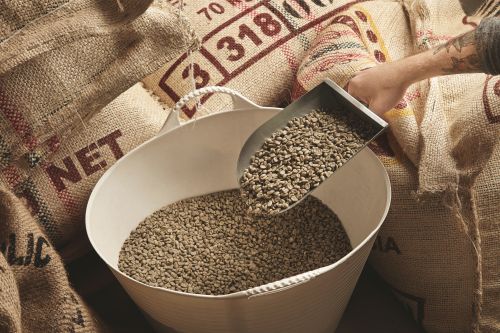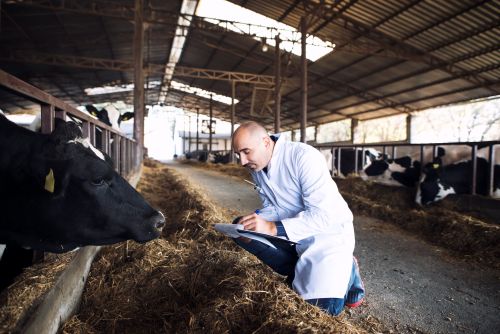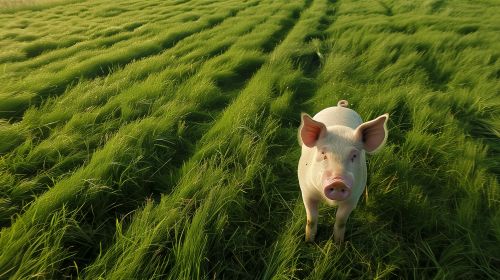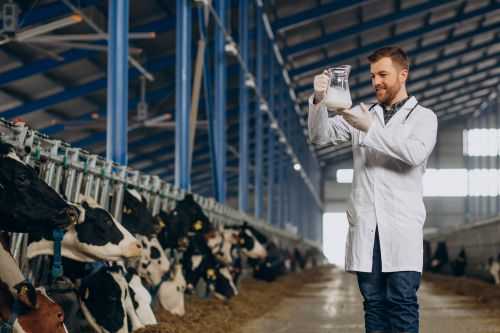694
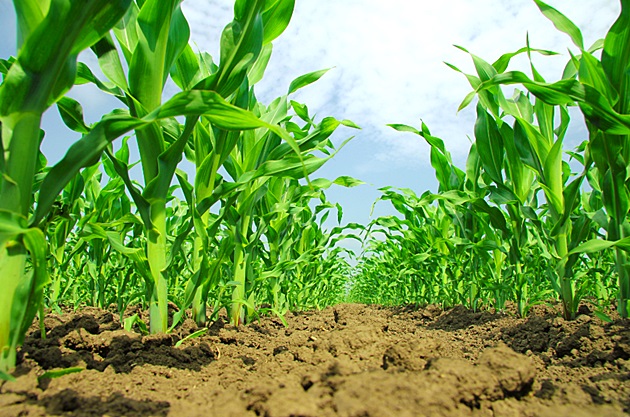
The increase in global CO2 emissions has profound consequences for plant biology, not least because of the direct influences on carbon gain. However, many uncertainties remain regarding how our major crops will respond to a future world with high CO2 emissions. Some of these uncertainties have been addressed in the research titled "Integrating Plant Science and Crop Modeling: Assessment of the Impact of Climate Change on Soybean and Maize Production" by Sandor Fodor from the University of Agricultural Sciences in Budapest and Andrew Challinor from the University of Leeds, which is presented below.
Comparative Studies
Comparative studies between crop models have identified uncertainties and large biases associated with climate change. The need to quantify uncertainty has brought together the fields of plant molecular physiology, improvement and crop biology, and climate change modeling.
Comparing data from different models that have been used to assess the potential impact of climate change on soybean and maize production, future yield losses have been predicted for both major crops.
When considering the effects of CO2 fertilization, significant yield gains are projected for soybeans, along with a shift in global production from the southern hemisphere to the northern hemisphere.
Corn production is also estimated to shift northward. However, unless plant breeders are able to produce new hybrids with improved traits, projected yield losses for corn will only be mitigated through adaptations in agricultural management.
Additionally, the increasing demands of a growing global population will require larger areas of marginal land to be used for corn and soybean production. We summarize crop model results, along with mitigation options, to reduce the negative impact of climate on global corn and soybean production, providing an overview of the projected land use change as a major determinant for future global agricultural production.
The Good and the Bad
Atmospheric CO2 concentrations have risen from about 280 ppm in pre-industrial times to 400 ppm currently (IPCC 2013). The rate of concentration increase has accelerated in recent years, to the extent that CO2 could reach between 530 and 970 ppm by the end of the 21st century, leading to significant global warming (IPCC 2013).
Higher temperatures and elevated CO2 levels can be both beneficial and detrimental to plants, leading to changes in the global agricultural landscape. Global average temperatures have increased by 0.76°C in the last 150 years and are likely to increase by at least another 1.7°C by the end of this century.
In general, it is assumed that most plants are adapted to atmospheric CO2 below 300 ppm and that evolutionary adaptation may not keep pace with rapid increases in atmospheric CO2 (Ort et al. 2015).
Because high CO2 levels will favor carbon assimilation in photosynthesis and depress photorespiration in C3 photosynthesis plants, it is generally assumed that C3 plants will benefit from increased carbon gain, leading to increased biomass and yield.
Many aspects of plant metabolism, molecular physiology, structure, and development are modified by growth under high atmospheric CO2 conditions, not least because carbon assimilation is closely linked to primary nitrogen assimilation (Terashima et al. 2015 and articles cited here).
Moreover, CO2 elevation reduces stomatal density and also decreases stomatal pore opening, resulting in decreased evapotranspiration (Mansfield et al. 1990, Vavasseur and Raghavendra 2005, Kim et al. 2020). Stomatal development is also controlled by both CO2 and the phytohormone abscisic acid (ABA; Woodward 1987, Woodward and Kelly 1995, Tanaka et al. 2013).
Signaling Pathways
Several components in the signaling pathway that reduce stomatal openings in response to elevated [CO2] have been identified, including b-carbonic anhydrases (Hu et al. 2020), protein kinase HT1, transporter RHC1 MATE, and protein kinase NtMPK4 (Hashimoto et al. 2006, Marten et al. 2008, Tian et al. 2015). The generation of reactive oxygen species (ROS) is implicated in large CO2-induced decreases in stomatal density, requiring the presence of ABA receptors, PYR/RCAR and ABA (Chater et al. 2015).
Despite extensive research efforts over the past 50 years, the complex interaction between metabolic and environmental signals that determine plant responses to elevated CO2 is far from resolved, especially at the whole-plant level.
Much of our current understanding of crop growth responses to elevated atmospheric CO2 has come either from studies at free-air CO2 enrichment (FACE) sites or from chamber (open or closed) experiments. Unfortunately, such studies have not always yielded consistent results.
CO2 enrichment does not necessarily enhance plant growth or yield, and differences in the responses of these traits have been reported even within the same species (Ainsworth and Long 2005, Luo et al. 2006, Leakey et al. 2009a, b, Hasegawa et al. 2013, Bishop et al. 2015).
The Role of Crop Models
However, the studies provide essential baseline data that underpin crop models, predicting future changes in crop production and their implications for food security.
Crop models play a central role in informing the agro-industry and decision-makers about the risks and potential adaptation strategies to counteract climate change, as well as guiding scientists and plant breeders towards the traits needed in improved varieties and crop management practices to mitigate the impact of global climate change.
Comparative studies between crop models have identified uncertainties and large biases (e.g., Asseng et al. 2013, 2014, Bassu et al. 2014), and unfortunately, they often do not incorporate current knowledge about plant responses to growth under high atmospheric CO2 conditions (Durand et al. 2017).
This review summarizes current crop models and the complexity of the analysis, in the context of our current knowledge about the impact of elevated [CO2] on C3 soybean (Glycine max) and C4 maize (Zea mays) plants, which have an internal CO2 concentration mechanism.
Two Essential Plants
Corn and soybeans are used to produce a wide range of food and non-food products, including pharmaceuticals and biofuels, as well as significant food sources for animals. Here, we consider the projected impact of a future world with high CO2 emissions on global corn and soybean production.
Currently, corn is the most important cereal crop, and soybeans rank fourth in terms of global production. Since 1960, grain yields of soybeans and corn have increased by 7.6 and 2.6 times, respectively. Together, the United States, Brazil, and Asia (mainly China and India) account for 92% and 84% of global soybean and corn production, respectively.
However, while the area of land planted with legumes such as soybeans has gradually increased over the past 50 years, it still represents only a quarter of that planted with cereals such as corn (Foyer et al. 2016).
Moreover, while increases in cereal production during this period have been mainly due to yield increases, driven by the introduction of new varieties and improvements in agronomic practices, increases in legume production have been due to both increased planted area and cereal yield (Foyer et al. 2016).
Especially for soybeans, cereal production has increased proportionally more than for corn, largely due to the increasing demand for soybean products for animal feed and as a source of vegetable oil.
However, it is expected that cereal production will continue to increase over the next few decades to meet the growing demands of a global population that is expected to exceed 9 billion by 2050. Consequently, it will be necessary to use larger areas of marginal land for cereal and soybean production.
Comparative studies between crop models have identified uncertainties and large biases associated with climate change. The need to quantify uncertainty has brought together the fields of plant molecular physiology, improvement and crop biology, and climate change modeling.
Comparing data from different models that have been used to assess the potential impact of climate change on soybean and maize production, future yield losses have been predicted for both major crops.
When considering the effects of CO2 fertilization, significant yield gains are projected for soybeans, along with a shift in global production from the southern hemisphere to the northern hemisphere.
Corn production is also estimated to shift northward. However, unless plant breeders are able to produce new hybrids with improved traits, projected yield losses for corn will only be mitigated through adaptations in agricultural management.
Additionally, the increasing demands of a growing global population will require larger areas of marginal land to be used for corn and soybean production. We summarize crop model results, along with mitigation options, to reduce the negative impact of climate on global corn and soybean production, providing an overview of the projected land use change as a major determinant for future global agricultural production.
